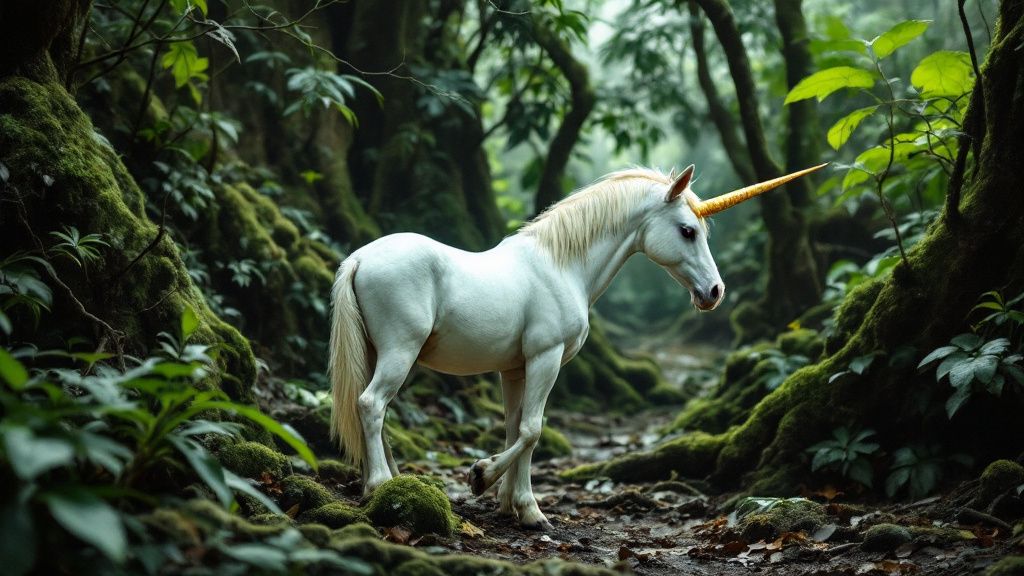
In the dense, mist-laden forests of the Annamite Range, nestled between Vietnam and Laos, resides a creature so elusive that it has earned the mythical nickname, "Asian unicorn." Known to science as the Saola (Pseudoryx nghetinhensis), this critically endangered species is a testament to the wonders of nature's unusual animal behavior and unique wildlife.
The Saola made its grand entrance onto the world stage relatively recently, with its discovery in 1992 jolting the animal discovery community. It's one of the rarest large mammals on the planet, with estimates indicating a dwindling population of fewer than 750 individuals in the wild. This rarity places it high on the list of strange animals that have captivated conservationists worldwide, pairing scientific intrigue with a desperate need for animal conservation efforts.
Sadly, the Saola is not just a symbol of unique animal adaptations but also of the stark realities of habitat loss. Its lush forest home is under siege from deforestation, an increasing threat that endangers its survival. In addition to this, the Saola must navigate a perilous landscape lined with snares set for other animals, a stark reminder of human impact on unique wildlife and uncommon pets in their natural environments.
To counter these threats, dedicated conservation initiatives have been established. Key strategies focus on preserving the Saola's dwindling habitat, reinforcing anti-poaching measures, and engaging local communities. These efforts aim to mitigate human-wildlife conflict, a critical step in ensuring the survival of this unique animal. Notably, the Saola Working Group reported in 2020 ongoing initiatives to create protected areas and conduct extensive surveys to monitor this rare animal's population, a crucial aspect of maintaining a robust unique animal list for the future.
Understanding the plight of the Saola underscores the importance of supporting animal rights organizations, which play a pivotal role in safeguarding rare animals from extinction. While buying exotic animals might appeal to some as an adventurous pursuit, the story of the Saola serves as a powerful reminder of the intricate balance between humans and nature, and the urgent need to prioritize conservation over collection in the face of such rare and exotic pets.
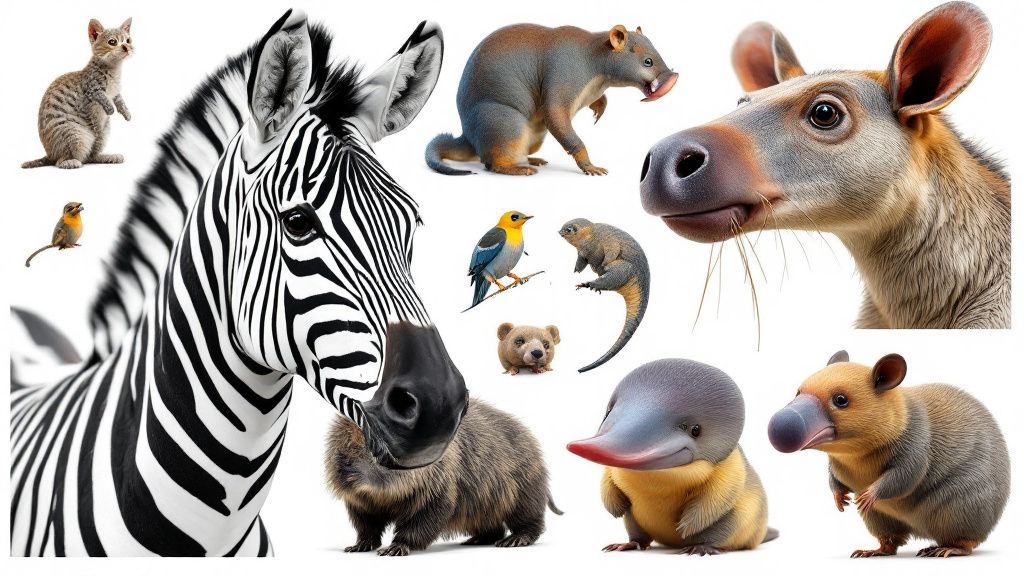
Exploring the world of unique animal characteristics is like diving into a vibrant tapestry of nature's creativity. These fascinating traits often serve more than just an aesthetic purpose; they are crucial adaptations that help these creatures thrive in their environments. Take the mesmerizing stripes of the zebra, for instance. While they are visually striking, they also serve as a clever camouflage technique, bewildering predators and enhancing the zebra's chances of survival amid Africa's sprawling savannas.
But nature's ingenuity doesn't stop there. The platypus, with its distinctive duck-bill, stands as an extraordinary example of evolutionary adaptation. Equipped with electroreception, this amphibious mammal detects electric fields produced by aquatic prey, providing it an exceptional hunting advantage. Similarly, the axolotl defies typical developmental patterns through neoteny, retaining juvenile traits like gills throughout its life. This peculiar trait allows it to regenerate lost limbs and organs, an uncommon gift among vertebrates that underscores nature's ability to surprise us with its array of unique animal adaptations.
Pangolins, wholly unique in their appearance, are the only mammals encased in keratin scales, a feature that offers formidable protection. When threatened, they curl into an impenetrable ball, a defense mechanism complemented by their long, sticky tongues designed for capturing ants and termites. Equally unique, male seahorses revolutionize traditional roles within the animal kingdom by carrying and birthing young, a noteworthy role reversal that showcases the diversity of reproductive strategies across species.
Among these marvels, the tardigrade, or water bear, showcases an unparalleled resilience. Its ability to survive extreme conditions—including, remarkably, the vacuum of space—is facilitated by entering a cryptobiotic state that nearly halts its metabolic processes. This cryptobiosis enables these tiny creatures to endure temperatures ranging from -272 to 150 degrees Celsius and withstand radiation levels lethal to most life forms.
To delve deeper into how these unique animal characteristics contribute to survival, immerse yourself in wildlife documentaries. These films offer an intimate look into the world of unusual animal behavior, highlighting the intricate connections between a creature's physical attributes and its ecological niche. Through this lens, the wonders of evolution and the incredible spectrum of weird animal species come to life, offering insights into how they continue to inspire curiosity and respect for the delicate web of life.
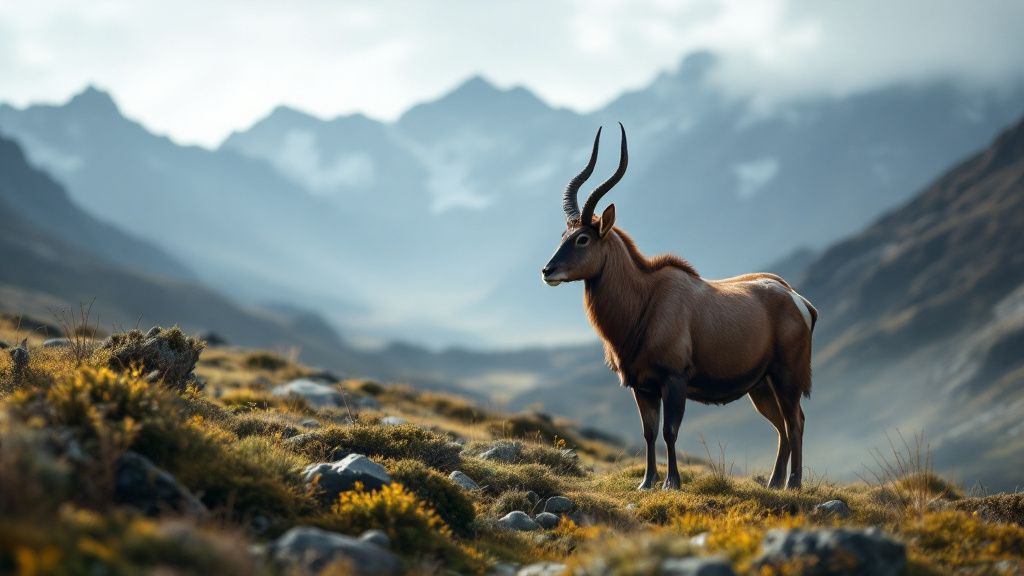
The preservation of endangered species presents a complex array of challenges, underscoring its difficult yet essential nature. Among the most pressing issues is habitat loss, a predominant threat to rare animals such as the Saola, the so-called "Asian unicorn." Found primarily in the lush forests of Vietnam and Laos, its existence is in jeopardy due to agricultural expansion, road development, and logging activities. These factors steadily erode their natural habitats, leaving the Saola's population at critically low numbers, with fewer than 750 individuals remaining in the wild as of 2023.
Another formidable challenge is poaching, which poses a consistent threat to wildlife across the globe. The lucrative demand for exotic pets and animal-derived products like ivory and rhino horn drives this illegal activity. The Saola is just one example within a broader, troubling picture; similarly, the poaching of elephants and rhinos has decimated populations, pushing these majestic creatures toward the brink of extinction. This relentless pursuit has a domino effect, disrupting ecosystems by altering food chains and destabilizing species interactions, potentially leading to the collapse of local biodiversity.
Addressing these challenges necessitates robust and effective conservation strategies. Creating protected areas is a foundational step in safeguarding these species' natural environments. Engaging local communities through conservation programs is equally vital, as grassroots involvement ensures that conservation efforts are culturally resonant and supported by those who share the land. Anti-poaching initiatives, which actively involve these communities in wildlife protection, can significantly bolster efforts to mitigate illegal hunting activities.
However, these conservation efforts often grapple with limited resources, making public awareness and support crucial. By strengthening conservation laws and advocating for more rigorous enforcement, we can help curb habitat destruction and poaching. Moreover, your support for animal conservation organizations can make a tangible difference. Whether through donations or volunteering, contributing to these entities empowers them to continue their invaluable work in safeguarding these unique wildlife gems. It represents a collective commitment to preserving the enchanting diversity of life, ensuring that rare species like the Saola are not lost to history but instead thrive for future generations to marvel at.
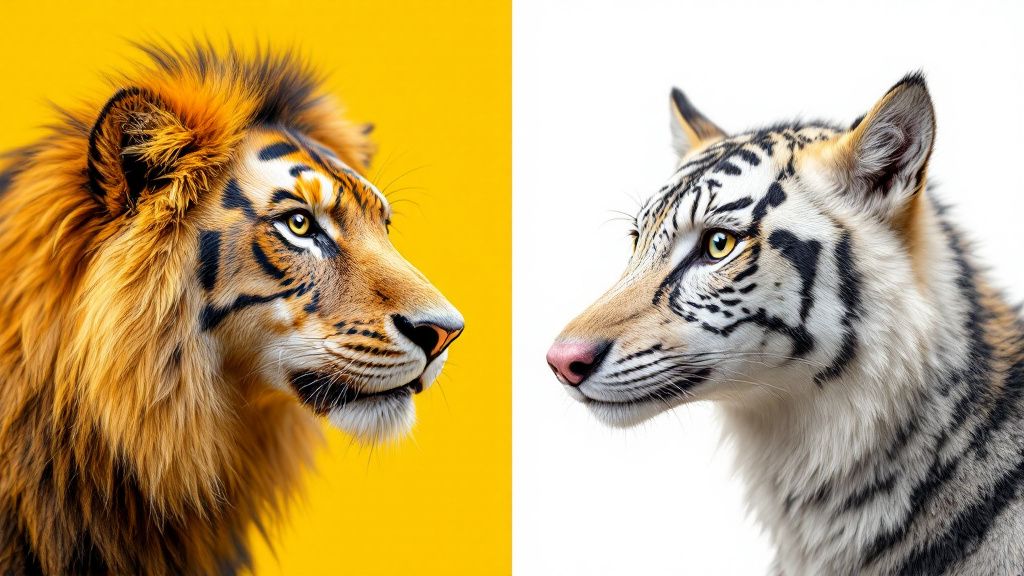
Examining the traits of rare versus common animals reveals a fascinating spectrum of adaptations, each tailored to the distinct needs of their respective environments. Rare animals often possess unique features that starkly differentiate them from the more widespread species inhabiting similar ecosystems. Take, for example, the Tufted Deer, whose small, pointed, tuft-like antlers contrast sharply with the robust antlers typically associated with deer species. This distinctive feature underscores the variation in adaptation strategies across species within the same family.
Similarly, the Bird-of-Paradise is renowned for its dazzling plumage, a trait that sets it apart from more subdued forest dwellers like the robin. This vibrant coloration not only serves as a vehicle for sexual selection but also influences its interactions within the ecosystem, showcasing the role of rare adaptations in ecological dynamics. Examining these extraordinary traits highlights the divergent evolutionary paths that species have taken to thrive in their niches.
Among terrestrial animals, the long neck of the giraffe is a rarity, uniquely enabling it to browse treetops for sustenance—a competitive edge in environments where ground-level foliage might be sparse. Such specialized adaptations emphasize the diverse evolutionary strategies that sustain life across varied ecological zones. Similarly, the marked resilience of the tardigrade, or water bear, is emblematic of rare physiological adaptations. Its ability to withstand extreme conditions, from scorching heat to the vacuum of space, exemplifies exceptional survival strategies in the animal kingdom.
Contrast these with common traits, which are shared widely among a multitude of species. The four-limbed body structure typical of mammals is a prime example of a characteristic that provides stability and mobility, representing a foundational feature across vertebrates. These traits underscore the evolutionary breadth characterizing more generalized survival strategies.
Exotic animals—often rare species—present another dimension of unique traits. The vivid colors of poison dart frogs, for instance, operate as a potent warning mechanism to potential predators, exemplifying how rare adaptations confer survival advantages. However, what qualifies as rare or exotic can differ based on geographical context. A species considered exotic in one region might be quite common in another, illustrating the importance of location in animal classification and sparking discussions about the roles different species play within their environments.
Immersing yourself in wildlife documentaries can enrich your understanding of these intriguing contrasts. Such explorations provide vivid, real-world insights into how rare animal adaptations and common traits alike contribute to the grand tapestry of ecosystems, highlighting the continuous interplay between nature’s diversity and its shared characteristics.
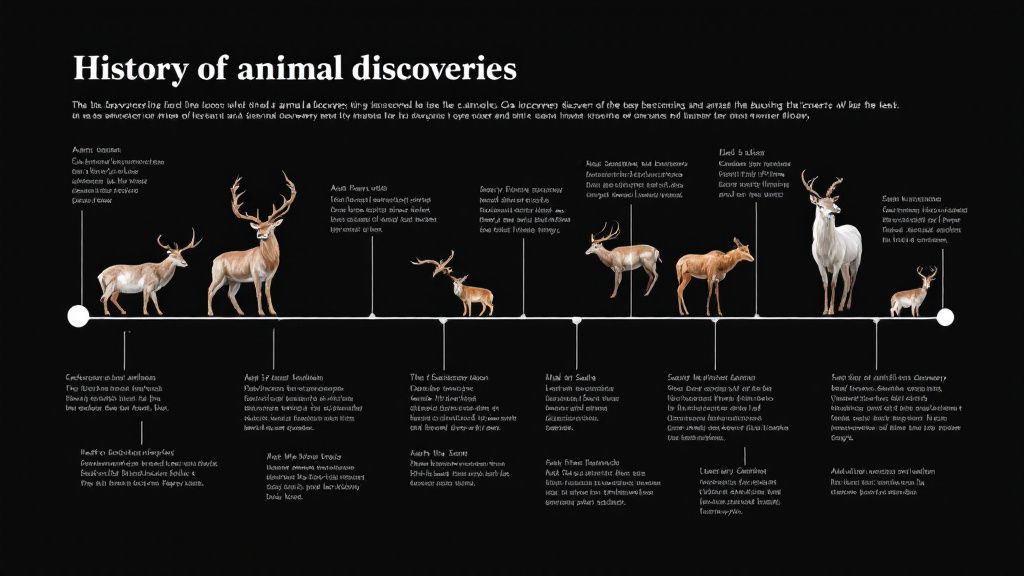
The narrative of animal discovery is a captivating voyage through time, showcasing humanity's unending curiosity and the wonders of the natural world. The identification of new species has consistently intrigued both scientists and enthusiasts, offering glimpses into nature's diverse tapestry. Perhaps one of the most remarkable chapters in this narrative is the discovery of the Saola (Pseudoryx nghetinhensis) in 1992, a moment that reignited interest in the verdant landscapes of Vietnam and Laos.
Referred to as the "Asian unicorn," the Saola came to light when a team from the World Wildlife Fund (WWF) stumbled upon a pair of peculiar antlered skulls in the Annamite Range. This discovery was monumental, not only because the Saola was previously unknown to science but also due to its close relation to cattle and other bovids. It quickly rose to prominence as one of the most significant animal discoveries of the 20th century, underscoring the endless possibilities lying in the unexplored corners of our planet.
The story of the Saola is emblematic of the broader history of animal discoveries, marked by both triumphs and urgent conservation challenges. Today, fewer than 750 Saola are believed to persist in the wild, their existence threatened primarily by habitat loss and poaching. This critical status underscores the fragility of newly discovered species and the need for concerted conservation efforts.
The history of unique animal findings is replete with riveting tales. Before the Saola's discovery, the okapi (Okapia johnstoni) was introduced to European naturalists in the early 20th century. The first western record of this elusive creature was noted in 1901, symbolizing the era's continued exploration and the revelation of nature's hidden wonders. More recently, the Tapanuli orangutan (Pongo tapanuliensis), discovered in 2017, has drawn significant attention as the most endangered great ape species. Meanwhile, ongoing expeditions in the Amazon rainforest have unveiled several new species of frogs and reptiles, exemplifying the ceaseless journey of discovery.
The pursuit of understanding and cataloging the earth's biodiversity dates back to the Age of Exploration. Nevertheless, contemporary advances in technology and bolstered conservation efforts have substantially enhanced our ability to explore previously inaccessible or understudied regions. This historical journey of wildlife discovery serves not only to deepen our appreciation for the natural world but also to highlight the continued responsibility to protect these extraordinary creatures.
To delve deeper into this fascinating history, consider exploring scientific journals that chronicle these discoveries. They offer a rich repository of knowledge, detailing the efforts, triumphs, and ongoing quest to understand and preserve the planet's diverse animal kingdom.
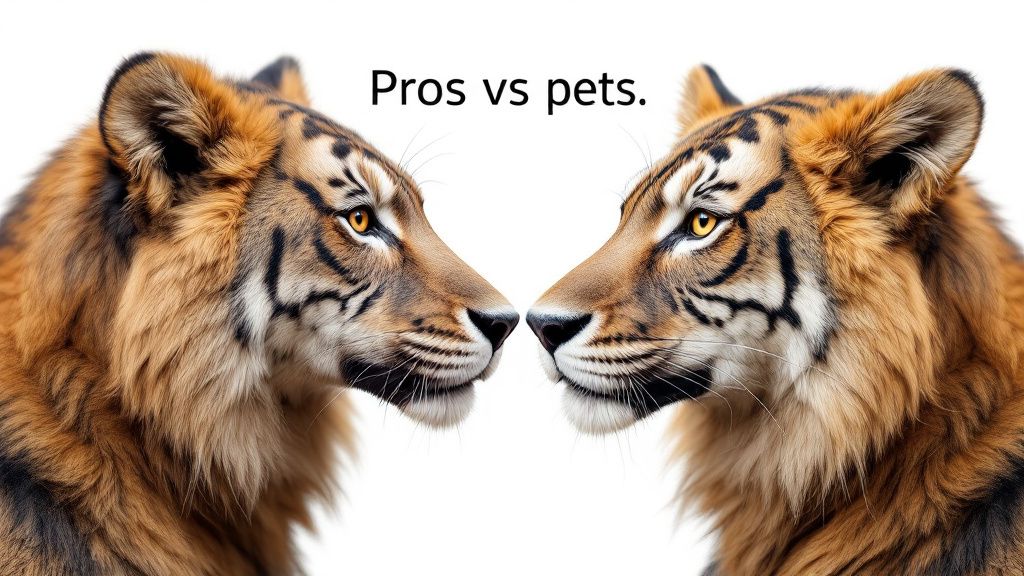
The ownership of exotic pets is a topic that stirs passionate debate, straddling the lines between ethical considerations and individual freedoms. At the heart of this discussion are contrasting viewpoints from animal rights organizations, pet enthusiasts, and conservationists. On one extreme, proponents of exotic pet ownership assert that keeping such animals can play a crucial role in conservation efforts, serving as an educational tool for raising awareness about rare species. They argue that, through responsible ownership, individuals can gain a unique connection and companionship with these uncommon pets, thus fostering a deeper appreciation for wildlife.
On the flip side, opponents emphasize the myriad welfare challenges associated with keeping exotic animals in domestic settings. These concerns include the risk of inadequate care, insufficient facilities to meet the animals' physical and social needs, and the potential for the spread of zoonotic diseases, which can jump from animals to humans. This perspective points out the difficulty in providing environments that mimic the complex natural habitats from which these animals originate. Proper socialization, nutritional requirements, and space needs are often unmet within the constraints of private homes, leading to compromised animal welfare.
In response to these concerns, many states in the U.S. have implemented laws regulating or outright banning the ownership of specific exotic species, such as big cats and primates, citing both public safety and ethical considerations. These regulations aim to address the dangers posed not only to the public but also to the animals themselves, creating a framework that acknowledges the complex demands of exotic pet ownership.
Animal rights organizations advocate for robust regulatory measures and, in some cases, the complete prohibition of exotic pet ownership. They highlight the challenges that most owners face in replicating the intricate needs of these animals, arguing that the majority of people are ill-equipped to manage the complexities involved in providing suitable care. The welfare of these creatures remains a paramount concern, as they often suffer when removed from their natural environments and social structures.
To navigate this contentious issue, potential exotic pet owners are encouraged to thoroughly educate themselves on what ethical exotic pet keeping entails. Considerations must include the animal's natural habitat, social interactions, and dietary necessities. Careful reflection on these factors can help form a more balanced perspective, one that prioritizes the wellbeing of these unique animals and respects their rightful place in the natural world.
Ultimately, the debate over exotic pet ownership reflects our broader relationship with the animal kingdom. As you weigh the arguments for and against, it becomes crucial to place the animal’s welfare at the forefront of the conversation, ensuring that any decision made contributes positively to the overarching goals of animal conservation and ethical stewardship.
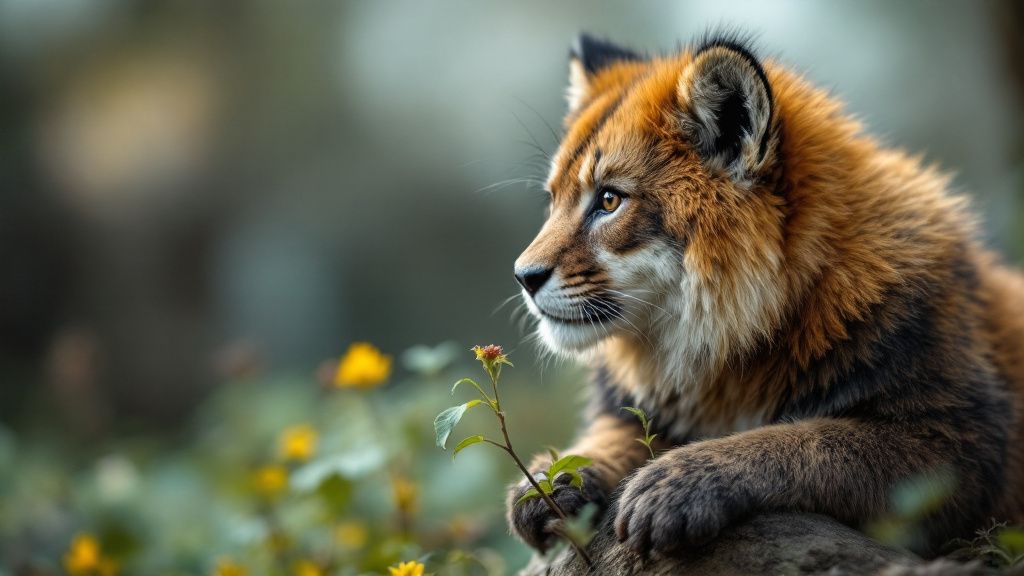
Statistical insights into unique wildlife paint a sobering picture of the challenges these species face and the imperatives for conservation. Among the most critical findings is the status of the Saola (Pseudoryx nghetinhensis), often dubbed the "Asian unicorn." Since its discovery in 1992, this enigmatic creature's numbers have dwindled dramatically, with recent estimates pointing to fewer than 100 individuals remaining in the wild. The primary threats of habitat loss and poaching reflect broader pressures that endanger unique and rare species globally.
The World Wildlife Fund (WWF) reports that approximately 1 million species currently face the threat of extinction. This alarming figure underscores the acute urgency for concerted preservation initiatives, as these creatures play integral roles in their ecosystems. Such efforts are vital not only for the species themselves but also for maintaining ecological balance and the health of our planet.
The IUCN Red List provides further context, listing over 38,000 species as endangered, encompassing both critically endangered and endangered categories. This staggering number highlights the significant conservation work required to prevent these species from slipping into extinction. However, amid these daunting statistics, there are glimmers of hope, as evidenced by successful conservation stories. For instance, the giant panda has seen a resurgence from around 1,000 individuals in the 1990s to over 1,800 today, thanks to dedicated conservation initiatives. This positive trend showcases the potential for reversing wildlife declines with sustained effort and commitment.
Despite such successes, the broader picture remains troubling. According to the 2020 Living Planet Report by the WWF, global wildlife populations have plummeted by an average of 68% since 1970. This dramatic decline denotes a severe crisis in biodiversity, highlighting the crucial need for intensified conservation measures. Habitat destruction, climate change, and human encroachment are key factors driving these losses, necessitating global cooperation and proactive strategies to protect our planet's diverse life forms.
Informing yourself about these statistics and the state of wildlife around the world can empower and galvanize action. Supporting animal conservation efforts—whether through advocacy, volunteering, or donations—can significantly contribute to preserving these remarkable species. In doing so, you play a part in the broader global effort to safeguard the precious tapestry of life that enriches our planet, ensuring that the rare and unique wildlife we cherish today can thrive for generations to come.
Get free resources, early access to new features and updates.
No spam. Just fun educational emails!